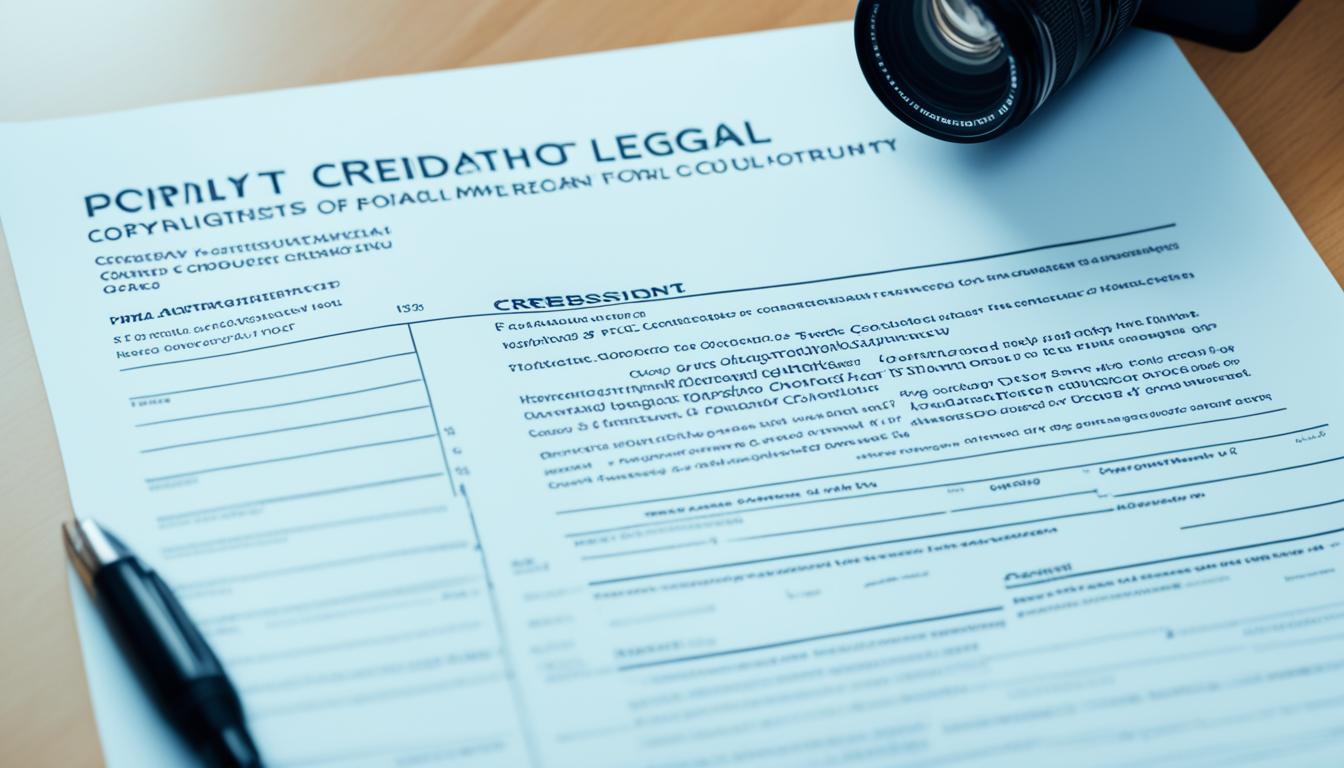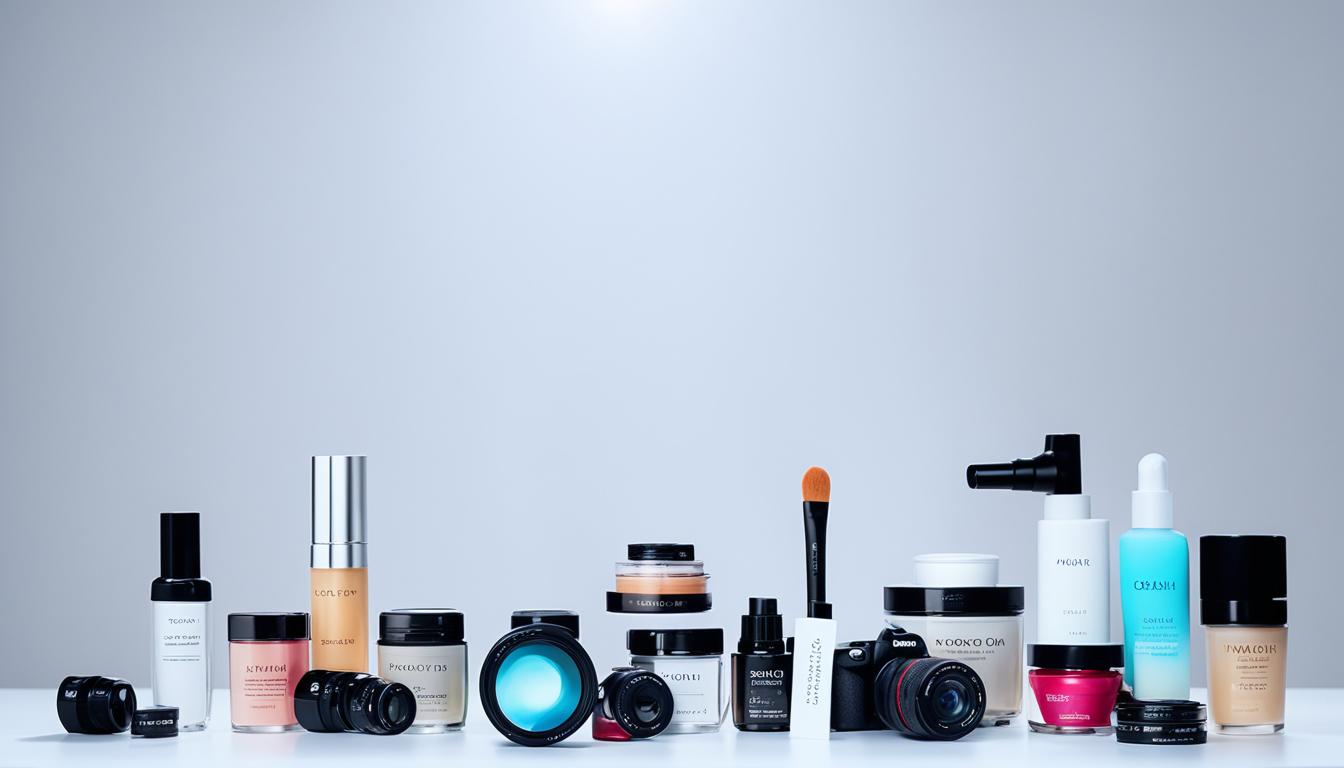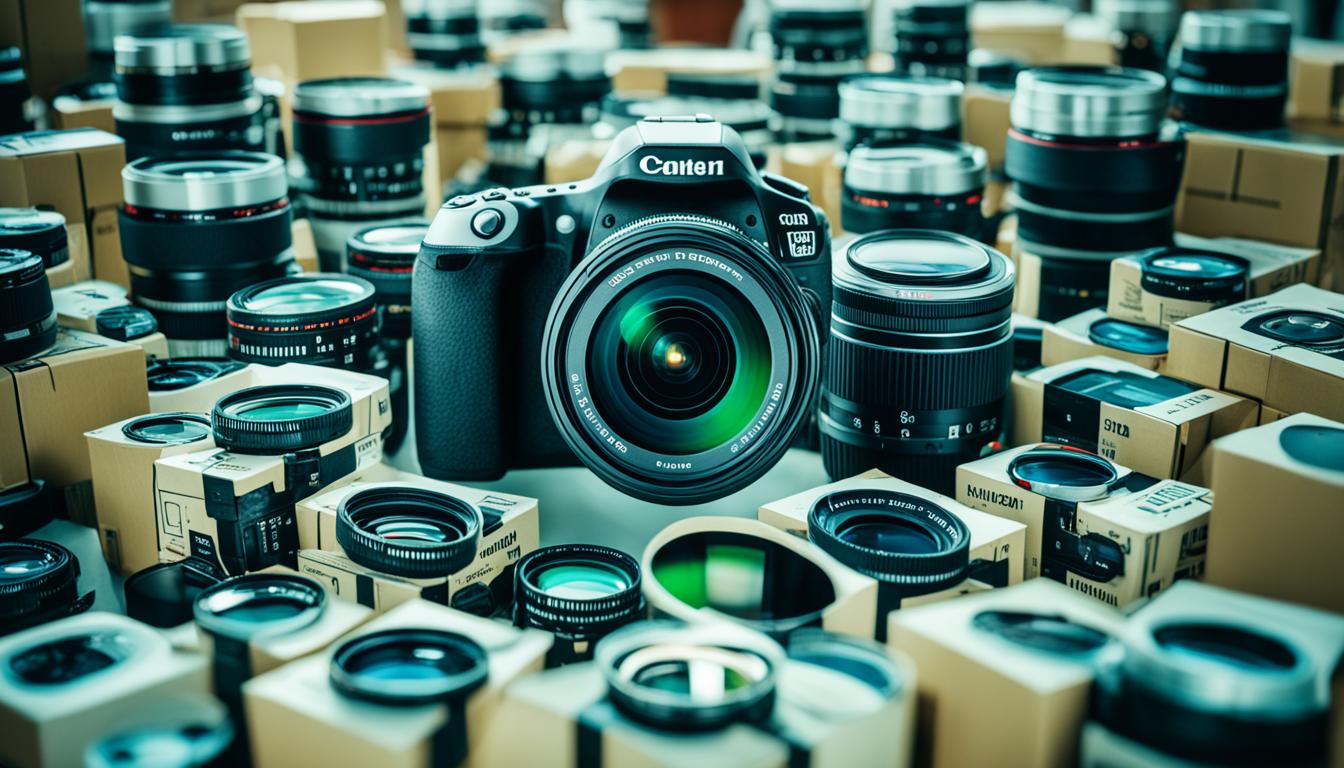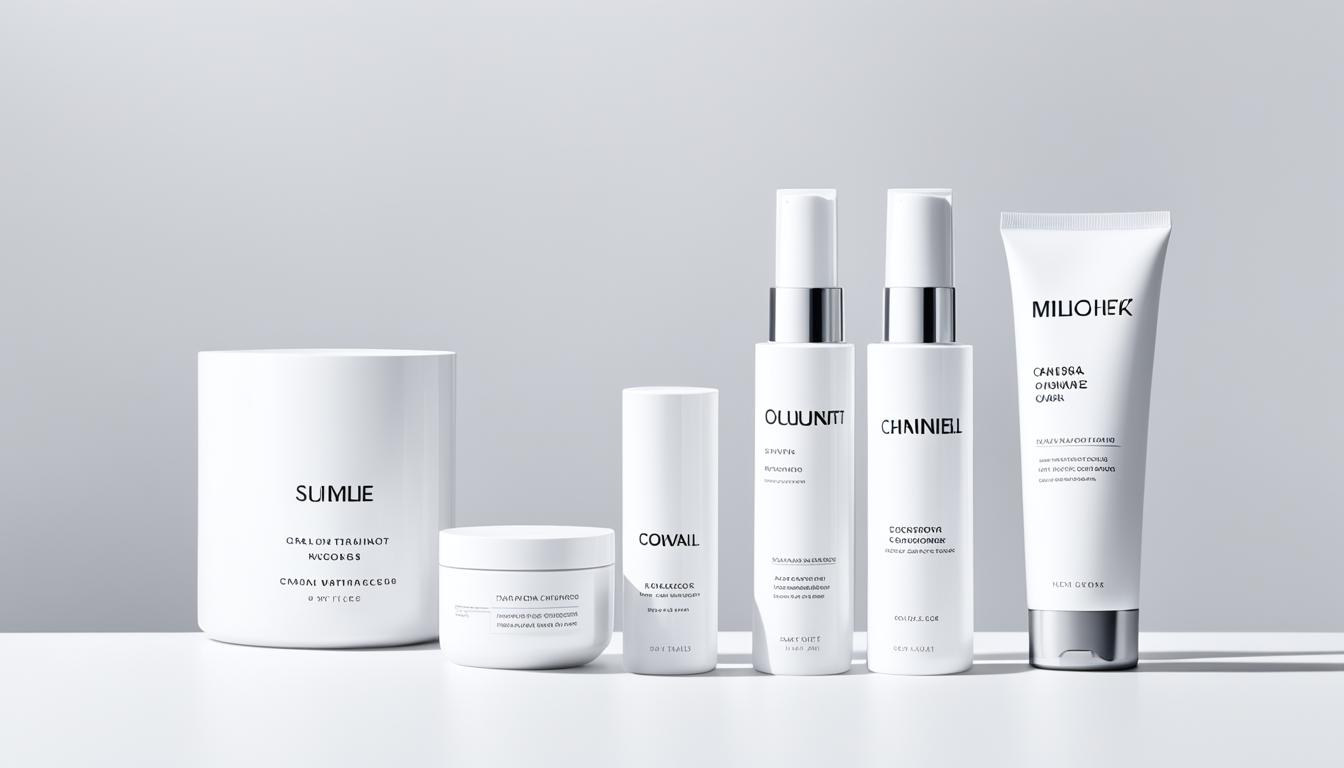When it comes to product photography, there are several legal considerations that photographers should be aware of. Understanding the laws surrounding copyrights and trademarks is crucial to avoid potential disputes and infringement claims. This article will delve into the key aspects photographers need to know when capturing images of products.
Key Takeaways
- Photographers should seek written permission before photographing copyrighted works to avoid disputes.
- Photographers own the copyrights in the photos they take, even if they are not formally registered.
- Taking photographs of trademarked images without permission may lead to trademark infringement.
- Photographers should assess whether a product is protected by copyright based on the defined categories.
- Understanding practical considerations and consulting with copyright holders can help photographers navigate product photography legalities.
Photographic Copyright and Third-Party Copyrighted Images
As photographers, we hold the copyrights to the photos we capture, even if they are not formally registered with the U.S. Copyright Office. However, it’s crucial to understand the implications when photographing someone else’s copyrighted work.
When we take a photograph of another person’s copyrighted work, such as a painting or artwork, there’s a potential risk of copyright infringement. The copyright owner may argue that we are infringing on their rights by reproducing their work without permission.
While we can claim fair use as a defense, it is essential to note that fair use is stronger and easier to justify when our photographs serve educational or commentary purposes. To avoid any disputes or legal complications, it is always advisable to seek written permission before photographing copyrighted works.
The Importance of Seeking Permission
By seeking permission, we demonstrate respect for the copyright owner’s rights and ensure that our work aligns with the principles of fair use. Obtaining written permission provides us with a legal basis to protect ourselves if any copyright claims arise in the future.
“Seeking permission before photographing copyrighted works not only helps us avoid potential disputes but also establishes a positive relationship with artists and creators.”
Whether we are photographing artworks, branded products, or any other copyrighted works, obtaining permission from the copyright owner is a sign of professionalism and ethical practice. It safeguards our work and reputation while fostering a healthy environment for artistic collaboration.
Fair Use in Photography
Fair use is a legal doctrine that allows us to use copyrighted material without permission from the copyright owner under certain conditions, such as for educational, commentary, or transformative purposes. However, fair use can be a complex concept and is often subject to interpretation.
To strengthen our fair use claim as photographers, it is crucial to ensure that our photographs serve educational, commentary, or critical purposes. By adding value through our unique perspective or analysis, we can enhance our chances of successfully claiming fair use.
Photographing for Educational or Commentary Purposes
If our photographs document and illustrate a particular subject matter for educational or commentary purposes, there is a stronger argument for fair use. These types of photographs provide valuable insights, stimulate intellectual discussion, or contribute to the public’s understanding of the subject matter.
When capturing images for educational or commentary purposes, it is important to highlight the transformative nature of our work. By adding our creative touch, interpretation, or analysis, we enhance the fair use defense, demonstrating that our photographs serve more than merely reproducing the copyrighted work.
However, it’s crucial to note that fair use determinations are fact-specific and can vary from case to case. Seeking legal advice or consulting with intellectual property professionals can provide us with a better understanding of fair use in specific situations.
Remember, always seek written permission before photographing copyrighted works to protect our rights and maintain a respectful approach towards copyright owners. By doing so, we can navigate the complexities of copyright law while capturing compelling and ethically responsible photographs in the process.
Photographs of Third-Party Trademarks
Taking a photograph of a corporate logo, which is protected through federal trademark registration, may amount to trademark infringement. Trademark owners have the exclusive right to use certain words, slogans, or images as a signifier of the source of goods. Therefore, photographers should be cautious about reproducing trademarked images without permission, especially if they intend to sell products featuring those images. Major companies are particularly vigilant in policing and enforcing their trademarks.
Photographers should carefully examine their photographs for any potential intellectual property belonging to third parties to avoid legal issues. By obtaining trademark clearance and securing proper authorization, photographers can safeguard themselves from potential trademark infringement claims.
In case a photographer wants to include a photograph of a third-party trademark in their work, they should follow these steps:
- Obtain permission: Seek written permission from the trademark owner or their authorized representative.
- Trademark research: Conduct a thorough search to determine if the trademark is registered and actively protected.
- Trademark clearance: Ensure that there are no existing conflicts or other trademark holders with similar marks.
- Usage guidelines: Adhere to any specific usage guidelines provided by the trademark owner.
By adhering to these guidelines, photographers can navigate the complexities of photographing third-party trademarks and minimize the risk of trademark infringement.
Trademark Clearance Process
Before photographing a trademarked image, photographers should undertake a comprehensive trademark clearance process to mitigate potential legal issues. This involves:
- Conducting a trademark search to determine if the trademark is registered and actively protected.
- Identifying any potential conflicts or similar marks that could pose legal challenges.
- Evaluating the potential risk of trademark infringement based on the intended use of the photograph.
- Seeking legal advice or guidance for complex trademark clearance scenarios.
By following these steps, photographers can ensure they are legally compliant when photographing third-party trademarks.
| Trademark Clearance Process | Description |
|---|---|
| Trademark Search | Conduct a search to identify registered trademarks and ensure they are actively protected. |
| Conflict Identification | Identify any potential conflicts or similar marks that could lead to trademark infringement claims. |
| Risk Assessment | Evaluate the potential risk of trademark infringement based on the intended use of the photograph. |
| Legal Guidance | Seek legal advice or guidance for complex trademark clearance scenarios. |
It is crucial for photographers to prioritize trademark clearance to avoid legal entanglements and protect their professional reputation.
Legal Considerations for Photographing Copyrighted Objects
When photographing copyrighted objects, photographers must be aware of the legal implications to avoid copyright infringement. Copyright protection extends to various types of works, including literary, artistic, and photographic creations, as well as maps, advertisements, and labels. It is crucial to determine whether a product or any of its components fall within these protected classes.
If a photographer wishes to include a copyrighted object in their photograph, it is advisable to obtain written permission from the copyright owner. This permission ensures that the photographer is legally authorized to capture the copyrighted object without facing potential legal consequences.
Fair use exceptions may apply in certain cases, allowing limited use of copyrighted materials without permission. However, it is important to note that fair use exceptions have limitations and should be carefully evaluated within the specific context of the photograph.
By obtaining permission and understanding fair use exceptions, photographers can navigate the legal considerations associated with photographing copyrighted objects and protect themselves from copyright infringement claims.
Here is an overview of legal considerations for photographing copyrighted objects:
- Determine whether the object is protected by copyright.
- Obtain written permission from the copyright owner.
- Evaluate fair use exceptions, if applicable.
“Obtaining written permission from the copyright owner ensures that photographers can legally capture copyrighted objects in their photographs.”
It is essential for photographers to prioritize copyright protection and respect the rights of copyright owners. By adhering to legal considerations and obtaining necessary permissions, photographers can confidently capture stunning images while respecting the intellectual property rights of others.

Exceptions to Copyright Protection in Product Photography
In some cases, product photographers may find themselves exempt from liability under copyright law. There are various exceptions and limitations that provide indirect protection to photographers when capturing images of products.
One such exception is outlined in Section 51 of the Copyright Designs and Patents Act 1988. This section excludes liability for photographs of designs that are not considered artistic works. If a product or part of a product does not qualify for copyright protection as a graphic work, work of sculpture, or work of artistic craftsmanship, photographers generally do not infringe copyright when photographing those products.
To illustrate this point further, take a look at the following table that outlines the different categories of protected works and their eligibility for copyright:
| Protected Works | Eligibility for Copyright |
|---|---|
| Graphic Works (paintings, drawings, maps, etc.) | Eligible for copyright protection |
| Sculptures | Eligible for copyright protection |
| Works of Artistic Craftsmanship | Eligible for copyright protection |
| Non-Artistic Designs | Generally not eligible for copyright protection |
Additionally, photographers may benefit from Section 52 of the CDPA, which allows for the copying of artistic works after 25 years from the first marketing of the articles. This provision takes into account copyright duration and further expands the scope of photographs that may be exempt from liability.
For a better understanding of how these exceptions and limitations work, let’s take a look at an example. Imagine that a photographer captures an image of a product that features a non-artistic design, such as a simple logo that does not qualify as a work of art. In this case, the photographer would not infringe copyright by photographing the product, as it falls outside the protected categories.
In summary, exceptions to copyright protection in product photography provide indirect safeguards for photographers. Section 51 of the Copyright Designs and Patents Act 1988 excludes liability for photographs of designs that are not considered artistic works, and Section 52 allows for the copying of artistic works after a certain duration. By understanding these exceptions, photographers can navigate copyright law while capturing stunning product images.
Assessing Copyright Protection in Product Photography
When engaging in product photography, it is crucial for photographers to assess whether the subject falls into one of the defined classes of protected works. Understanding the categories of graphic works, sculptures, and works of artistic craftsmanship can help determine the level of copyright protection associated with a product.
Graphic Works
Graphic works encompass a wide range of creative expressions, including paintings, drawings, maps, and similar works of visual art. These works are protected by copyright law, and photographing them without permission from the copyright owner may infringe upon their rights.
Sculptures
Sculptures are three-dimensional works that possess visual appeal and exist as art beyond their utilitarian purposes. Whether a sculpture is located in a public space or privately owned, copyright protection extends to the artistic elements of the sculpture, such as its unique design and expression. Photographers should be cautious when photographing sculptures and seek permission if necessary.
Works of Artistic Craftsmanship
Works of artistic craftsmanship are products created with skill and effort, exhibiting aesthetic qualities and artistic value. While not traditionally considered “art,” these utilitarian objects can still enjoy copyright protection. Examples include intricately designed furniture, handcrafted jewelry, and ornamental textiles. It is essential to evaluate whether any part of a product exhibits artistic craftsmanship to determine its level of copyright protection.
“Understanding the categories of copyright protection helps photographers confidently navigate the legal landscape of product photography.”
To facilitate a better understanding, let’s take a closer look at the assessment of copyright protection in product photography through an informative table.

Practical Considerations for Product Photography
When it comes to product photography, there are several practical considerations that photographers should keep in mind to ensure they stay on the right side of copyright law and protect their work. While it may seem that selling products featuring copyrighted works could potentially lead to infringement claims, there are some factors to consider.
If photographers are selling products that may feature copyrighted works, it is likely that the owner of the copyright in those works will benefit from the sales. In such cases, copyright ownership may not be a concern as the copyright holder stands to gain from the commercial use of their intellectual property.
However, copyright ownership is still an important aspect to be aware of. It is crucial to understand who holds the copyright to any images or designs that may be included in the photographs, especially if photographers plan to sell their work or license it for commercial use.
To ensure compliance with copyright laws and obtain necessary permissions, it is advisable for photographers to consult with copyright holders or their representatives. Seeking permission can provide photographers with the legal clearance they need to avoid copyright infringement claims and protect their work and reputation in the industry.
Benefits of Copyright Licensing
Obtaining a copyright license can offer photographers additional benefits beyond legal compliance. By licensing copyrighted works, photographers can access a broader range of creative content to enhance their product photography. Licensing allows photographers to use copyrighted images, designs, or trademarks lawfully, adding value to their work and expanding their creative possibilities.
Furthermore, licensing copyrighted material can provide photographers with the reassurance that they are operating within the bounds of the law. With a valid license, photographers can showcase their professionalism and commitment to ethical practices, which can be appealing to clients and potential customers.
It is important to note that the specific licensing requirements may vary depending on the copyrighted works involved and the intended use. Photographers should carefully review licensing agreements and ensure they understand the terms and conditions before proceeding with the use of copyrighted materials.
| Practical Considerations for Product Photography | Benefits of Copyright Licensing |
|---|---|
|
|
Conclusion
As product photographers, we must prioritize legal compliance by navigating the complexities of copyright and trademark law. It is crucial to understand the rights of copyright owners and trademark holders to avoid potential disputes and infringement claims. To protect ourselves legally, we should always seek written permission before capturing images of copyrighted works or trademarks.
Additionally, being aware of the exceptions to copyright protection and considering practical considerations is key. By staying informed about fair use and other applicable laws, we can create compelling product images while respecting the intellectual property rights of others. Prioritizing proper legal compliance will safeguard our work and reputation within the industry.
Remember, product photography is an art that requires a balance between creativity and legal understanding. By following these product photography legal tips and taking copyright and trademark protection seriously, we can ensure that our work is not only visually captivating but also respects the intellectual property rights of others. Let’s be responsible photographers who contribute to a thriving creative community while also upholding the values of intellectual property rights in photography.
FAQ
What are the legal considerations for product photography?
Product photography involves copyrights and trademarks. Photographers must be aware of copyright infringement when photographing someone else’s protected work. Additionally, photographing trademarks without permission may lead to trademark infringement. It is advisable to seek written permission before photographing copyrighted works or trademarks to avoid potential legal issues.
Do photographers own the copyrights in their own photographs?
Yes, under U.S. law, photographers own the copyrights in the photos they take, even if they are not formally registered with the U.S. Copyright Office.
What should photographers do if they want to photograph copyrighted works?
To avoid copyright infringement claims, photographers should seek written permission from the copyright owners before photographing copyrighted works. Fair use may be a defense, especially when photographs are used for educational or commentary purposes. However, seeking permission is the best practice.
Can photographers photograph trademarks without permission?
Photographing trademarks without permission may amount to trademark infringement. Trademark owners have exclusive rights to use certain words, slogans, or images. Photographers should be cautious about reproducing trademarked images without permission, particularly if they intend to sell products featuring those images.
What are the exceptions to copyright protection in product photography?
Section 51 of the Copyright Designs and Patents Act 1988 provides a general exclusion from liability for photographs of designs other than artistic works. Copyrighted products that fall outside the protected classes of graphic works, sculptures, or works of artistic craftsmanship may generally be photographed without infringing copyright.
How can photographers determine if a product is protected by copyright?
Photographers should assess whether a product falls into one of the defined classes of protected works, such as graphic works, sculptures, or works of artistic craftsmanship. Understanding these categories will help determine if any part of the product is protected by copyright.
What are the practical considerations for product photography?
If photographers are selling products that may feature copyrighted works, it is advisable to consult with copyright holders or their representatives to ensure compliance. By seeking permission and understanding copyright ownership, photographers can mitigate legal risks and protect their work and reputation in the industry.
How can I ensure legal compliance in product photography?
It is crucial to familiarize yourself with copyright and trademark laws. Seek written permission before photographing copyrighted works or trademarks. Consider fair use exceptions when applicable. By respecting intellectual property rights and obtaining necessary permissions, photographers can ensure legal compliance and protect their work.
Do I Need to Be Aware of Copyrights and Trademarks When Taking Product Photography?
When getting into product photography, it’s crucial to understand copyrights and trademarks. To master product photography fundamentals, it’s important to be aware of what is and isn’t allowed when photographing branded products. Make sure to educate yourself on the legal aspects to protect yourself and your work.




